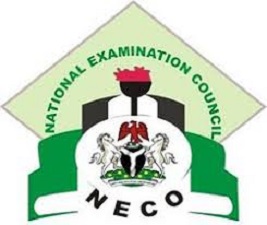Neco Literature in English answers 2021
Here is the neco literature in English answers for neco 2021. Remember to subscribe for waec, you won’t see free answers. Join our Whatsapp group and chat the admin.
LITERATURE
SECTION-I
(1)
Yoko is one of the thirty seven wives of Chief Gbanya. She is his favourite wife. The chief does whatever Yoko tells him to do. This does not go well with Lamboi and Musa. They look for ways to kill the Chief and take over the reign of Mende Kingdom. Their opportunity comes when the Chief is flogged mercilessly in their presence by the Governor. He sustains injuries during the flogging. Lamboi and Musa mix a poisonous concoction using alligator gall. They give it to him. He drinks it. Before he dies, he hands over his Chiefdom to Yoko after she persuades him. This does not go well with Musa and Lamboi. They look for ways of removing her from the throne. Meanwhile, Yoko upon ascending the throne, sacrifices her womb as it is in line with the tradition. During her reign, she is able to conquer more territories and add them to her kingdom. She also maintains a cordial relationship with the Governor and act according to the dictates of the imperial representative. In a plot to dethrone her, Musa and Lamboi kidnap and kill Jeneba and lied to the people that it is Madam Yoko that use her for ritual. This allegation makes Queen Yoko to be subjected to humiliation and disgrace from her subjects. She finally goes to the poro bush and clears her name of the allegation. In a bid to avoid further embarrassment and disgrace, she asks her maid to prepare for her a poisonous concoction. She drinks it and takes her own life. She says it is better than facing further humiliation.
====================================
SECTION-II
(6)
Jimmy Porter is the “angry young man” of the play, usually found spouting tirades against the complacency of the British upper classes, and especially against his wife Alison and then his lover Helena. Born working class but highly educated, like his friend and roommate Cliff, but has an ambivalent relationship with his educated status, seeing himself mostly as a working class man and yet frustrated that his education can do nothing to affect his class status. “He is a disconcerting mixture of sincerity and cheerful malice, of tenderness and freebooting cruelty.” Jimmy “alienates the sensitive and insensitive alike,” and his “blistering honesty, or apparent honesty…makes few friends.” Jimmy is a frustrated character, railing against his feelings of alienation and uselessness in post-war England.
====================================
SECTION-III
(10)
(i)THE DESTRUCTIVE NATURE OF UNCONTROLLED JOY: The poet persona is obviously happy and joyous about his retirement from service after thirty five years in service. This explains why he organises a party to mark his retirement. However, his joy gets the better of him and he drinks to stupor, something he has been able to control for over thirty-five years in government employment. His over-joyousness lands him in his grave. Thus, in everything we do, there is need for moderation. Had the retiree been moderate while rejoicing and compliant to his erstwhile driving code, he would have enjoyed his retirement in peace. All his years he “pummeled his boozy throat” in compliance with his duty rules just went to waste.
(ii)THE DANGER OF DRUNK DRIVING:This is another significant theme in A Government Driver on His Retirement. The poem expresses the universal driving rule that drivers should not drive when drunk. It is widely believed that driving when drunk makes the driver(s) susceptible to auto-crash as in the case of our newly retired government driver. Driving when drunk pushes him to his early grave. His drunkenness “sent him home to rest in peace”. The poem exposes us to the dangers of driving when drunk and of course, that of careless driving.
(iii)DEATH: Towards the tail end of the poem, the theme of death manifests. Death is an inevitable phenomenon every human being must undergo. Every one of us will die someday. However, the poet persona hurries his death time as a result of his carelessness and unrestrained joy.
====================================
SECTION-IV
(12)
(i) Freedom and Slavery: The predominant theme of the poem is freedom. The first line depicts this by introducing “the free bird.” And the opposite theme is “slavery.” A caged bird in captivity “sings of freedom.” The caged bird was created for freedom as a free bird. Nonetheless, it is in an unnatural situation, trapped in a cage. Not only is it trapped, but its body has been mutilated as well.
(ii) Despair and Hope: The caged bird is in a state of despair. Being tied up in the cage compromises his movement. He is hopeful that it will transform into a free bird. That is why he sings of the anticipated freedom. Freedom seems out of reach, and his “tune is heard” in the distant hill. This tells us that the bird is hopeful one day he will fly over to the distant hill just like his voice.
(iii) Fear and Courage: While the free bird finds it easy to fly and enjoy his freedom by claiming the sky, the caged bird lives in fear. However, he is courageous enough to keep singing and use the power of his throat to fight for his freedom
====================================
